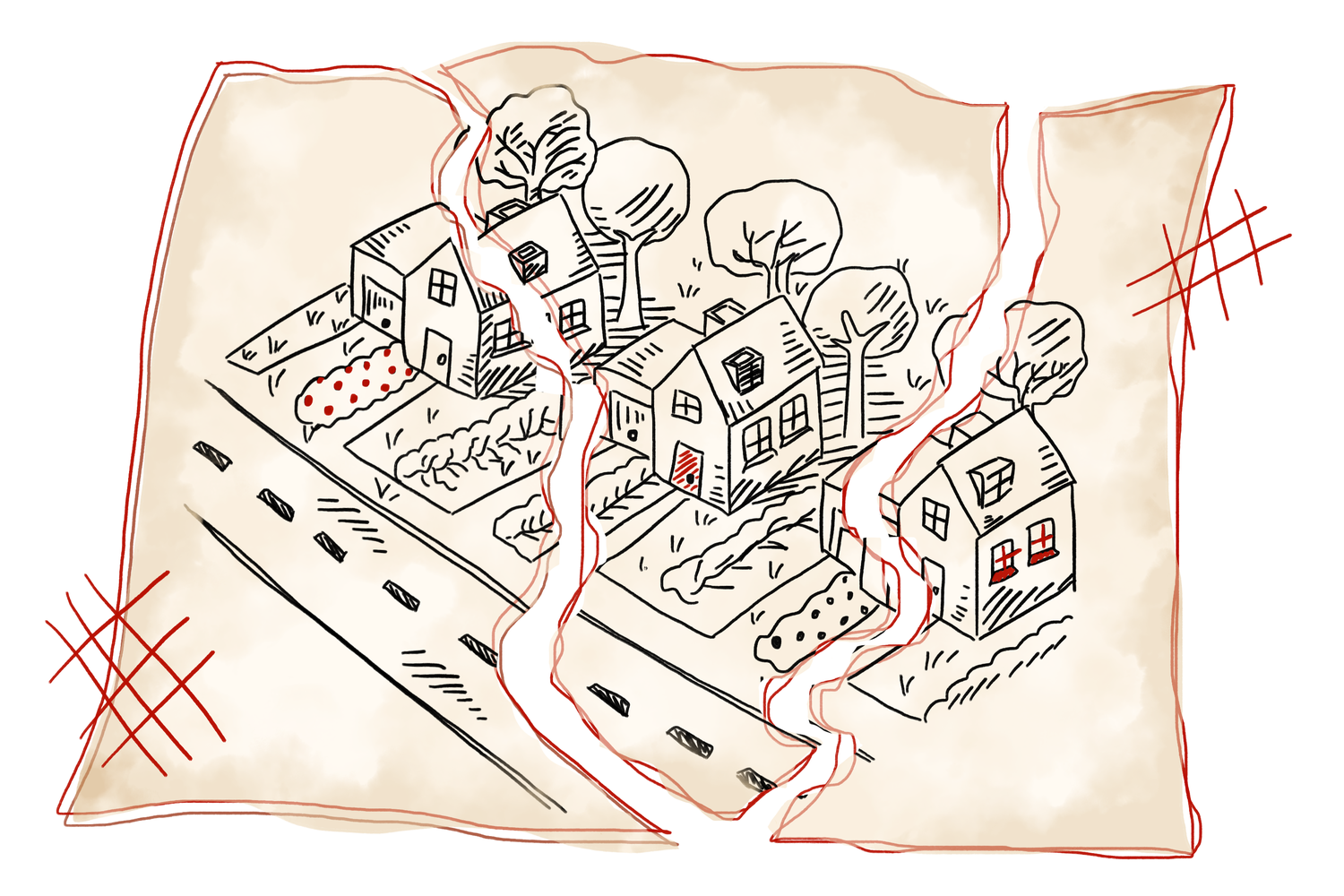Won’t You Be My Neighbor?
I am not a good neighbor.
While I don’t smoke, throw parties, or play loud music into the dead of night, I am not exactly “neighborly” either. Who’s to my right, to my left, across the hall — I couldn’t tell you. Even looking at the names on the doors, I don’t recognize half of them.
There are many things I could blame this on. Four different points of entry to Mather Low-Rise lessen the chances of crossing paths in the hallways, and the hallways themselves are so dismal, who would want to stand outside and chat anyway? I think the entryway meetings are meant to remedy this, but I mostly go with my suitemates to swipe some food and get back to work. In the hectic day-to-day of being a college student, free food is the goal, not small talk with the people next door.
And so, I live surrounded by strangers.
On Harvard’s website, the College’s freshman entryways are advertised as “one of the most rewarding experiences” for first-year students. But as I found on a recent visit to Annenberg, within these entryways, there seems to be a wide range in successful community building.
Entryways of the students I spoke with varied in size from 14 students to 45 and entryway meetings (organized by the proctors and Peer Advising Fellows) were held anywhere from four times a semester to once a week. But no matter the size or meeting frequency, the majority of students I talked to told me they weren’t close to the students in their entryway, outside of their suitemates.
Now, if you are not a transfer student like I am, it’s possible that this is old news. Still, I find it strange that of the 20 or so people I spoke to, only five planned on blocking with any of their roommates or suitemates, and none were blocking with people in their entryways who were not also in their suite.
When I asked them whose responsibility it was to build community, about half told me that it was up to the proctors and PAFs to do the heavy lifting. But even students who placed the brunt of responsibility on the PAFs’ shoulders admitted that it was also on them for not showing up when the opportunity was there.
As we talked about relationships within the dorms, a common — and surprising — theme began to surface among the students who knew their neighbors best: Shared hallway bathrooms.
If even just the thought of sharing a bathroom with a hallway of people fills you with apprehension or disgust, I feel you. The hallway bathroom is often considered less than luxurious, forcing you to leave the privacy and comfort of your own space for some of life’s more personal moments.
But I can attest to the power of the hallway bathroom as a conduit for neighborly interaction. Some of my favorite memories freshman year are those I spent suspended in unpredictable conversation with neighbors I ran into as we made our way to and from the shared space. The hallway bathroom is how I met some of my closest friends.
Is the hallway bathroom annoying? Absolutely. Does it cause drama and arguments when all parties aren’t pitching in to maintain it? Almost always. But avoiding the possibility of annoyance for the assured comforts of solitude is how we got here in the first place.
Across the United States, fewer people than ever — just 26 percent — report knowing “most” of their neighbors. Apartments are increasingly designed to maximize screen time and alone time over hosting people. Bedrooms and closets are growing, while dining rooms are disappearing. TV mounts in every room take precedence over maximizing good light.
While in some ways technology has made it easier than ever to stay connected with the people we love most, it has pushed us away from the people we are physically nearest. Air conditioning, Zoom, Netflix, UberEats — technical advancements have made it so more people can choose to spend their time inside and alone. We work from home, eat at home, unwind at home. And as we shift to a more solitary existence, our infrastructure is shifting, too. Libraries, parks, restaurants, public gyms, and pools — “third places” where people can go to hang out outside of work or home — are rapidly disappearing.
Bella DePaulo, a social psychologist and author of “Single at Heart,” takes great offense at the idea that people who spend more time alone are less happy than those who frequently socialize. In a recent piece for Psychology Today, she argues that rather than increased solitude, Americans are experiencing increased “autonomy and authenticity” to spend as much time alone as they always wanted to without the social pressure to go out just because they “should.” She calls these people “solitude savorers” and applauds their bravery to stay true to themselves.
Now, I grew up with six siblings in a house built for fewer. I know the joys of solitude, and the insanity that comes without enough of it. But Depaulo’s argument doesn’t take into account that, if given the choice, almost everyone is a “solitude savorer.” Because other people are annoying as hell.
Other people are loud and messy and tend to have all sorts of wrong opinions and irritating habits. Dealing with them is not easy or immediately fun. Building connections and community is often the least convenient choice. Of course there are people who find it much more relaxing to stay within the comfort of their own homes. But the ramifications of doing so are not insignificant.
Neighbors teach us empathy. They teach us to deal with conflict. In-person communities are where we learn how to be uncomfortable and annoyed in an adult, community-conscious way that our online communities (where we’re rewarded for throwing tantrums while looking at profile pictures instead of real people’s faces) simply cannot do.
Society — democracy — they depend on us being social. And, thus, they require us to risk being irritated.
And it’s not just the greater good that depends on neighborly interactions. In the longest-running study on human happiness, Harvard scientists found that, above all else, embracing community was the key to living longer, happier lives.
Research has also shown time and again that humans are terrible at predicting what will bring us the most happiness. The things we think we want are so rarely the things we need. More and more, building community requires making the least glamorous choice, trading the luxury of a private bathroom in your college dorm for a shared one. It necessitates that we embrace friction and discomfort for the potential of greater connectedness and unpredictable relationships, like the freshmen friendships I made with my shower caddy in hand.
Obviously, outside of the college dorm, the shared hallway bathroom carries little to no viability, practicality, or desirability as a solution to the crisis facing in-person communities. But it may serve as the perfect example of the type of counter-intuitive thinking it will take to build them.
Experience tells us that attempts to connect are usually reciprocated, but we resist simple interactions for fear of being a bother, an unwelcome interruption to someone’s routine. Crossing the threshold of comfortable behavior— saying hi in the laundry room, striking up a conversation in the elevator, knocking on doors to ask for a favor — is to risk being annoying. But it may also be the best path to stronger community, serendipitous interactions, and greater personal happiness.
Maybe if I did smoke, throw parties, and play loud music into the dead of night, I’d actually be a better neighbor. More small transgressions into our neighbor’s space may be just the thing to bring us together.
If being annoyed is the price we pay for community, we could all stand to be annoyed a little more often, and even a little more annoying.
— Magazine writer Aurora J. B. Sousanis can be reached at aurora.sousanis@thecrimson.com. Her column “Degrees of Separation” explores the relationship between technology and our growing self-isolation.



